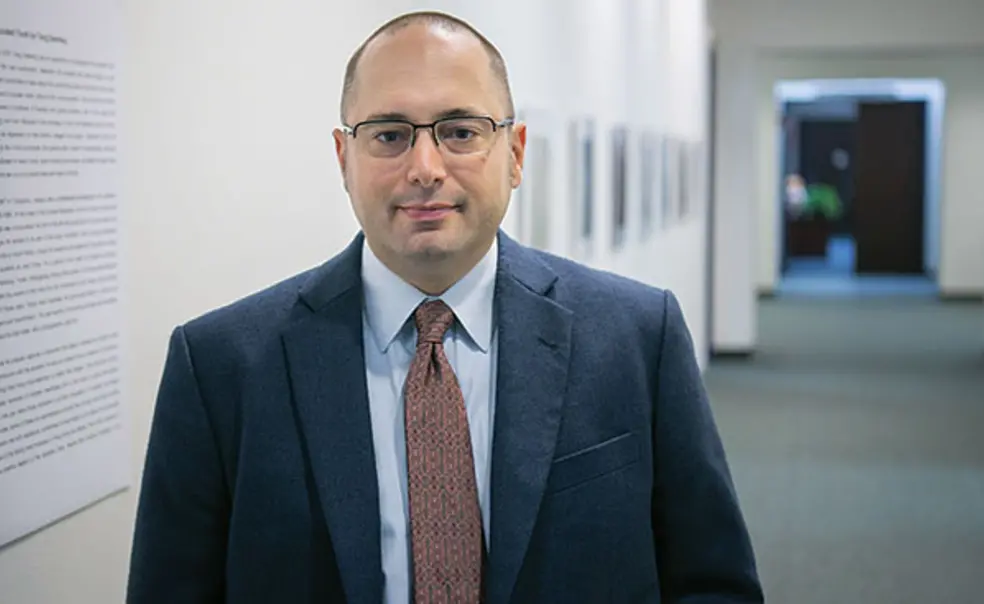Q&A: Peter Moskos ’94 on the Cop Conundrum
Former police officer-turned-academic discusses shootings, body cams, and the future of policing
It wasn’t a plan for the timid: From 1999 to 2001, Peter Moskos ’94 was a night patrol officer in the Baltimore Police Department’s gritty Eastern District. “There is something about danger and sweat that makes a beer after work particularly cold and refreshing,” he wrote in his 2009 book, Cop in the Hood (Princeton University Press). It was never Moskos’ plan to remain a police officer, but rather to use his experiences in the classroom. Moskos, an associate professor in the department of law, police science, and criminal-justice administration at the John Jay College of Criminal Justice, is now writing a book about the drop in crime in New York City in the 1990s, attributed in part to tougher prison sentences, a stronger national economy, and a drop in crack cocaine use.
In general, how do you characterize the relationship between law enforcement and the public today?
First of all, it’s never been great. This is not new, the idea that people don’t like cops. We as a society have to ask, what’s the big picture here? But we haven’t gotten beyond individual incidents. Outrage can raise an issue, but it doesn’t by itself lead to effective reform. And there will always be pushback from law enforcement if people are outraged at legitimate use of force.
Across the country’s 17,000 police departments, there is no accepted definition for excessive use of force. How does that affect law enforcement?
Police have a working definition of use of force. And the differences between jurisdictions aren’t that great. But what worries police so much isn’t cops getting in trouble for doing their job wrong, it’s getting in trouble when they’re doing their job as trained. That’s what terrifies them. A lot of cops I’ve spoken to say they’re less likely to confront criminals because there’s a great risk to their career and family if they have to shoot someone. Police are avoiding situations that might lead to force.
What role do smartphone videos play in the unfolding discussion?
In the long run, I think it’s going to help everybody. Cops are doing the right thing most of the time, and often the video shows exactly the cop’s story. And when it doesn’t? Oh, well. I tell cops that whether they like the idea of being filmed or not, they have to embrace it. Body cams are inevitable. But there are still important issues of privacy, archiving, and public access that need to be resolved.
What is the future of law enforcement in America?
Trump’s election certainly changes the police-are-the-problem narrative that was coming from the previous administration. The past two years have seen [a significant] increase in murder. That’s a trend that needs to be stopped. It’s too easy to tell cops what we don’t want them to do. It’s much harder to discuss the nitty-gritty of how we want police to interact with and confront violent criminals. The pressure to change police may start from the outside, but effective change comes from within. We need to see police as part of the solution again. That said, a lot of problems we see in America are related to illegal guns, poverty, mental-health care — it would be nice if we could address some of these before police have to get involved at all.
Interview conducted and condensed by Andy Faught












No responses yet